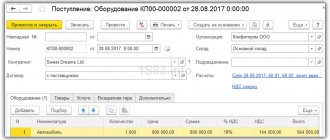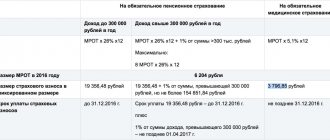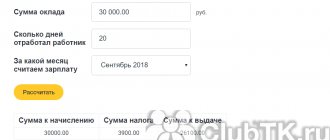- RusTender
- Question answer
- 44-FZ
- VAT in the contract
One of the most pressing issues when concluding a government contract is taking into account VAT in the cost of the contract for the performance of work, supply of goods or provision of services.
According to paragraph 4 of Art.
3 44-FZ, any legal entity or individual can become a participant in public auctions, incl. in the form of an individual entrepreneur. The law also does not establish restrictions on the form of taxation that the supplier uses. Organizations subject to special tax regimes can become participants in government orders, i.e. USNO, UTII, etc. VAT is a value added tax, which is included in the cost of goods, work or services sold and is paid to the state to the federal budget.
The standard tax rate is 20%, but there are also certain types of goods for which a tax rate of 10% and 0% is applied.
44-FZ – VAT in the contract price
The state customer, when forming the initial maximum price of the state contract, also includes the amount of VAT in it and indicates the NMCC in the tender documentation, taking into account this tax.
Some customers take into account that companies and individual entrepreneurs under special tax regimes can take part in the bidding, and stipulate that value added tax is taken into account only if the contractor is its payer, i.e. give the winner the opportunity to conclude a contract without VAT.
Note: even if the customer did not specifically note such a condition and, when concluding a contract with the winner on the simplified tax system, demands to pay tax, you can file a complaint with the FAS. In the practice of the antimonopoly authority, such cases have already been considered, and the decision was made in favor of the Supplier. For example, complaint No. 197/KS, despite the fact that the Customer applied to the Arbitration Court, the judges also recognized the decision of the FAS as justified.
Naturally, in such a situation, participants on the simplified tax system have an advantage over participants on the OSNO, because According to Part 1 and Part 2 of Article 34 44-FZ, the contract must be concluded on the terms stipulated in the procurement notice, and the price is fixed and determined for the entire execution period.
This means that the amount of VAT in the contract under 44-FZ, which is obligatory for payment by the participant on OSNO, will be additional income for the participant in the special regime.
Preparation and submission of a complaint to the FAS
to unlawful demands of the Customer
Order
But much more often there are situations when the customer simply indicates in the documentation that the price is calculated taking into account value added tax. The regulatory basis for choosing a method for determining the NMCC and carrying out calculations is Order of the Ministry of Economic Development of the Russian Federation of October 2, 2013 N 567, but this document does not regulate the inclusion of VAT in the contract price. However, when forming the NMCC, the customer must take into account the terms of the planned purchase and, if the subject of the contract contains goods, works or services subject to value added tax, the amount of VAT must be included in the initial (maximum) price.
In this case, the situation is different. If the customer in the contract establishes a condition to issue him an invoice, then based on the same Article 34 of 44-FZ, the contractor will be obliged to do this, because this condition was initially provided for in the auction documentation. As in the case described above, the winner will have to conclude a government contract at the price he offered during the procurement procedure.
Note : an example of consideration of such a complaint and a decision in favor of the Customer can be found here.
Who doesn't pay VAT
We will look at who is exempt from VAT and under what conditions in the diagram below.
The income of enterprises when combining UTII with the OSN and entrepreneurs using the simplified tax system are exempt from paying VAT. The figure below shows the categories that do not have the right to apply the simplified tax system
Companies, when combining UTII and OSN, must keep separate VAT records and fulfill a number of requirements:
- File returns and pay taxes on time.
- When purchasing goods and services with VAT for an enterprise on the OSN, take into account deductions when calculating the tax amount.
- Include the amount of VAT in the cost of goods when purchasing using UTII with VAT.
If these rules are observed, the organization is exempt from paying VAT. But when spending on utility bills or rent, the amount of “input” is distributed in proportion to the use of the product (work, services) by type of activity.
There are exceptions according to which entrepreneurs using the simplified tax system pay VAT:
- When importing goods into Russia from abroad.
- During operations under property trust management agreements.
- When an invoice is issued with VAT. If the supplier did not indicate VAT in the invoice, then the buyer on the simplified tax system is not worried about this fact.
How to find out whether a counterparty must pay VAT
To avoid incurring losses, it is advisable to find out whether the counterparty is a VAT payer. There are 2 ways to find out:
Request documents from the counterparty (extract from the Unified State Register of Legal Entities, a photocopy of the submitted VAT return for the last period with the stamp of the regulatory authority on acceptance, constituent documents of the organization, certificate of state registration, copy of licenses). Such documents will help you obtain the necessary information. Don’t be afraid of losing a client, be afraid of getting a problematic counterparty.
Please independently check the correctness of the details in the invoice, the accuracy of registration data, bankruptcy information, and information about the manager. Next, we'll look at how to do this.
VAT in the contract for the simplified tax system
If a participant works for the simplified tax system and is not a VAT payer, then fulfilling such conditions will be quite expensive. Because according to paragraph 5 of Art. 173 of the Tax Code of the Russian Federation, in the event that persons who are not taxpayers issue an invoice to the buyer of goods (in this case, the state customer) with the allocation of the amount of value added tax - the entire amount of tax indicated in this invoice is subject to payment to the budget.
Firstly, participants who do not pay attention to the fact that the contract price is indicated with VAT may be in for an unpleasant surprise when it is concluded. Because The price they offer will not include the payment of a 20% tax. In this case, the contractor may sign the contract and perform it at a loss.
Secondly, if the winner refuses to conclude a contract on such terms, then he may end up in the Register of Unscrupulous Suppliers.
Who has an advantage in electronic trading? Organizations with VAT or without VAT?
All electronic auctions are traded on a “downward” basis, that is, each subsequent offer is lower than the previous one (at least 0.5% - auction step), what makes bidders submit lower offers?
The reasons are different: the economic calculation of the profitability of the estimate showed high profits; lack of work at the enterprise (in order to preserve the team), dumping (the desire to prevent a competitor from working) with the aim of weakening it in the future, or reluctance to let new producers into their markets; force a competitor to work with little or no profit; just a desire to “win” and similar reasons.
But that is not all! Why do many companies today reduce their prices by up to 30% of the initial price of the lot? How do they fulfill the order? When calculating the NMCC (initial maximum contract price), the Customer is obliged to take into account all fees and taxes, so the NMCC includes VAT - and this is neither more nor less, and 18% of the entire price is a huge amount, which is quarterly after the completion of the work must be paid to the state. There are so-called “upravshchentsy” in Russia; they are exempt from paying value added tax. The auction reduction coefficient (the ratio of the contract price to the initial (maximum) price) is calculated differently for such firms.
Calculation of the reduction factor for organizations on OSNO (general regime with VAT) based on trading results:
K= bidder's offer / NMCK
This coefficient is always below 1
Calculation of the reduction factor for organizations using the simplified tax system:
K = offer of the order participant / NMCC (excluding VAT) (recalculated initial contract price according to the “simple” method)
This ratio may be even higher, and the supplier will have the opportunity to receive an 18% reimbursement if he purchased goods with VAT to fulfill the order.
Organizations with different taxation levels apply for electronic auctions and trade under unequal conditions.
Without going into the complexities of accounting (issues related to VAT compensation, purchase of materials, etc.), we can say for sure that organizations exempt from paying 18% have an advantage of 6-16% (the greater the reduction, the less %) over organizations are required value added tax . If companies on a general basis and “upravschens” agree among themselves on who will work for whom as a subcontractor, it looks ridiculous. If an organization using the simplified tax system agrees to subcontract to an organization with VAT, it will not only pay a subcontracting coefficient (from 3 to 10%), but also a reduction in the bidding of the organization that works with VAT. An OSNO organization will never work as a subcontractor to the “simplified” companies, because an automatic reduction of 18% is simply suicide. Sometimes the estimated prices are greatly inflated, and profitability remains the same even with large reductions. An entrepreneur with any taxation system is happy to work on such orders, the main thing is a high income from the execution of work.
Deciding how to work with or without VAT is a matter for each organization (depending on the type of activity, scope, scale of the project, etc.), but the calculation shows the undeniable advantage of the “simplified” ones, and quite noticeable.
This article is relevant only for entrepreneurs of small and medium-sized businesses , since the economic calculations of large players in the public procurement market are much more complicated. These rules also do not work for suppliers of expensive equipment.
We recommend that our clients calculate in advance the likely profitability of the lot put up for auction, analyze the estimate in detail and pay special attention to the cost of the main materials used.
Practice of FAS and AS on contracts with VAT
Suppliers working on a simplified taxation system, when faced with 44-FZ contracts with VAT, often file complaints with the FAS: at a maximum, in order to sign an agreement without taking into account the tax, and at a minimum, to refuse the conclusion without entering into the RNP.
The practice of the Federal Antimonopoly Service, as well as Arbitration Courts, in this matter is ambiguous. Much depends on the position of a particular management.
In our work practice, we attended meetings where representatives of regulatory authorities recognized the customer’s right to demand that the winner of a government order issue an invoice. Thus, even if the supplier is under a special tax regime, he will have to file a tax return and pay VAT on the price of the government contract.
And in this case, “simplified” organizations are in a less favorable situation than companies on OSNO, because companies with the simplified tax system will not be able to deduct the amount of this tax, unlike companies on the general taxation system.
If you work under a special taxation regime, then it is important to review the terms of the government contract also in terms of including VAT in the NMCC. After all, even if you win a tender, the execution of which involves issuing an invoice and paying taxes to the budget, and contact the FAS to protect your interests, there is a high probability that the decision will be made in favor of the customer.
Due to the lack of unity in the practice of the Federal Antimonopoly Service and the Arbitration Courts, it is impossible to predict in advance the outcome of the meeting on VAT issues in contracts under 44-FZ. It would be most rational to study similar cases in the region of interest and rely on the practice of a particular OFAS.
© LLC MKK "RusTender"
The material is the property of tender-rus.ru. Any use of an article without indicating the source - tender-rus.ru is prohibited in accordance with Article 1259 of the Civil Code of the Russian Federation
VAT in purchases according to law 223-FZ
Law 223-FZ does not establish strict limits and gives customers the right to decide many issues on their own. They themselves determine in their Procurement Regulations when they will charge the tax. There are different options:
- tax is included in the contract price, offers are compared at full cost ;
- VAT is included in the price, but the assessment compares the price without VAT.
Practice shows that controllers do not have a common opinion about which approach is correct. Several positions can be distinguished.
The assessment must be carried out based on the prices in the applications
Resolution of the Arbitration Court of the Far Eastern District dated July 29, 2015 No. F03-3011/2015 in case No. A73-14973/2014
The judges concluded that an increase or decrease in the value of the contract depending on the tax regime is unacceptable. This leads to the creation of preferential conditions for participants who pay VAT. After all, their prices in this case become 20% lower , while the prices of participants in the simplified tax system and other special modes do not change. And this is a limitation of competition.
Decision of the St. Petersburg OFAS Russia dated August 12, 2015 on complaint No. T02-405/15
The FAS Office believes that applications from VAT evaders should be assessed based on the prices they indicated . It is unacceptable to increase them by the amount of VAT.
Valuation cannot be carried out at prices excluding VAT, unless this is stated in the documentation
Decision of the St. Petersburg OFAS Russia dated April 15, 2016 on complaint No. T02-226/16
The OFAS commission ruled that the customer unlawfully compared proposals by omitting VAT, since such a procedure was not specified in the procurement documentation. The contract must be concluded at a price that includes all costs, including taxes. And the offer with the lowest price will be preferable, regardless of which tax system the participant uses.
How VAT is calculated in NMCC according to 44-FZ
Government customers form the maximum price of the tender and contract with the supplier based on the methods discussed in Part 1 of Art. 22 44-FZ. These include:
- monitoring of price offers;
- use of standards;
- calculation based on established tariffs;
- application of data from estimates;
- costly method.
FZ-44 explains which document states whether VAT is included or not when submitting to the 44-FZ site: the procedure for forming the NMCD and what it includes is indicated by the customer in the tender documentation. Read more: “How to justify the initial maximum contract price.”
Order of the Ministry of Economic Development No. 567 dated October 2, 2013 explains how to carry out the calculation. The document contains:
- regulations for the justification of the NMDC;
- formulas;
- examples of calculations;
- sample documents.
Article 22 of Federal Law No. 44 and Order No. 567 do not contain rules for drawing up NMCC with or without VAT, as well as instructions that when calculating the cost of GWS, the customer indicates separately the amount of tax, reduces or increases the final cost by the amount of the rate.
How to indicate tax in a contract under 44-FZ
The contract price is the value of the price offer of the winner of the tender or the cost agreed upon during the purchase with the supplier (Clause 1 of Article 34 of the 44-FZ). It remains unchanged throughout the duration of the contract. Exception: concluding an additional agreement on the grounds provided for by law.
There are no provisions in contract legislation that the tax regime applied by the supplier affects the final cost of GWS, as well as the conditions for participation in procurement. This means that if a supplier wins a tender at a certain cost and upon signing the contract it turns out that he is working according to a simplified approach, then the customer has no reason to reduce the payment for his goods.
The supplier’s additional profit is his legal income, which is justified by the use of a special regime. If the supplier on the site indicated the price without VAT, and the customer forces you to deduct 20% again, this requirement is unlawful.
To avoid controversial situations at the stage of selecting the winner, signing the contract and paying for it, include in the draft contract wording that will suit all participants, regardless of the tax regime they apply.
Example wording:
When closing contracts, the supplier is not obliged to provide the customer with an invoice if the tax regime it uses does not provide for this, even if the obligation to issue an invoice is specified in the contract. This position is confirmed by the resolution of the Court of Justice of the West Siberian District dated August 16, 2019 in case No. A03-16525/2018. The customer refused to accept the goods without an invoice, but the court sided with the supplier.
When a supplier issues an invoice and is a value added tax payer, an obligation to pay it arises. In this case, there is no right to receive tax deductions (clause 5 of the resolution of the Plenum of the Supreme Arbitration Court of the Russian Federation No. 33 of May 30, 2014).
If the customer is a tax payer under the contract, the amount payable to the supplier is reduced by the amount of tax on the basis of clause 2, part 13 of art. 34 44-FZ. This wording has nothing to do with the supplier’s taxation regime (USN or other).
IMPORTANT!
The maximum amount of commission paid by tender winners to the account of trading platforms is specified in GD No. 564 dated May 10, 2018, excluding value added tax.







